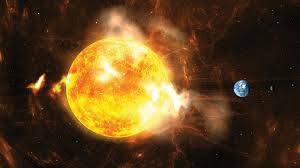The world has barely had time to forget the disruptions caused by the massive sunspot at the beginning of this month, which resulted in powerful solar flares and the longest solar storm of 2024, leading to radio signal interruptions in some areas. Now, it faces more geomagnetic storms expected this week.
Just two days ago, specifically on Monday, May 27, 2024, a strong X-class solar flare erupted from the southeastern edge of the Sun, peaking around 07:08 GMT, according to Space.com. The return of the giant sunspot "AR3664," which was behind the geomagnetic storm that occurred on May 10, 2024, after crossing the far side of the Sun, is anticipated to bring more auroras, as reported by Paper Insider.
The NASA Space Weather Prediction Center recorded a flare measuring X2.9 off the southeastern edge of the Sun. Scientists expected the flare to be stronger than X2.8, as the source spot was obscured at the Sun's edge, hence not all X-rays produced were measured by the sensors used for classifying the flare.
X-class flares represent the strongest classification of solar flares. Although we observed several strong flares earlier this month, the higher the number, the more intense the flare, potentially leading to radio outages and other communication disruptions on Earth. The source of the massive solar storm that occurred on May 10, which produced visible auroras across all 50 states for the first time in decades, was also sunspot AR3664.
A few days after the longest solar storm impacted Earth, the giant sunspot shifted to face Mars, as captured in an image taken by NASA's Perseverance rover from its location inside Jezero Crater on the surface of Mars on May 15, 2024.




